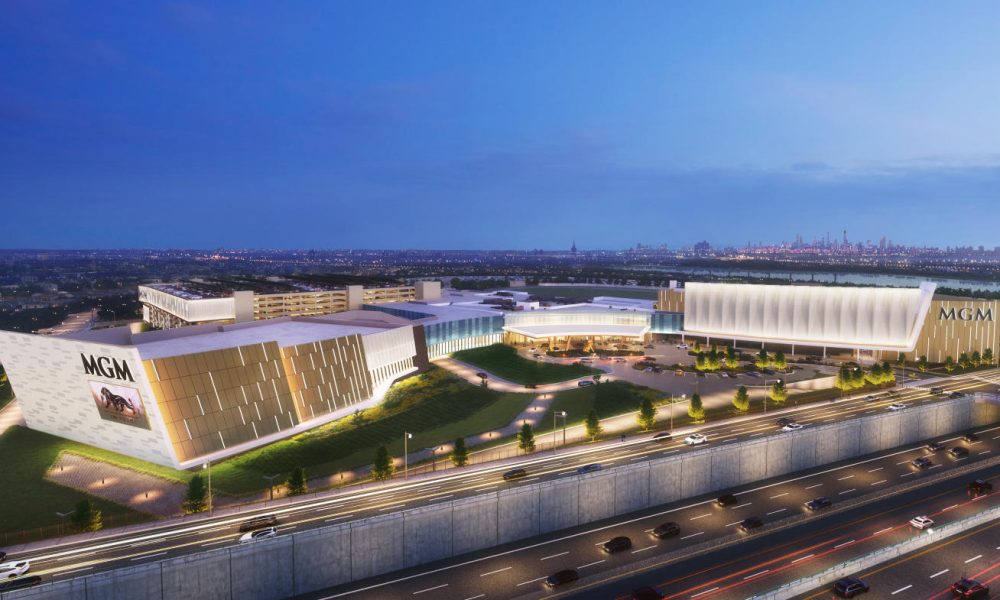Shocking news! MGM Resorts International is dropping its bid for a full casino license near New York City.
MGM already operates a racino in Yonkers, Empire City; it has over 4,000 slot machines that generated $607.4 million in gross gaming revenue in 2024. MGM was predicted to be a shoo-in for a casino license. After all, it has a long history, has paid billions in taxes to the state, and is considered a good corporate neighbor. At the Community Advisory Committee meetings, no one opposed the project and it received a 5-0 approval from the committee.
The site of Empire City has hosted horse racing since 1899. In 2001, slot machines were added to the menu, creating a “racino.” MGM bought the property for $850 million and immediately sold the real estate to MGM Growth Properties, now Vici Properties, for $625 million. At the time, it appeared clear that the racino was a placeholder. MGM was betting on getting a full casino license.
MGM offered to spend $2.3 billion to develop an 863,500-square-foot resort. The bid included 183 live dealer games, a 5,000-seat entertainment venue, new restaurants, and a sportsbook. The MGM proposal was the smallest and least investment of any of the casino proposals for New York City. Some of the other proposals were north of $10 billion with a gazillion bells and whistles. The MGM bid was not as glamorous as Caesars, Bally’s, Hard Rock, or the even Conely Island project. But it was solid and almost guaranteed. So what happened?
Timing may hold part of the answer. Each of the bidders was to submit its revenue projections and proposed tax rate by end of day on October 14, the same day MGM threw in the towel. MGM already pays 55 percent of GGR in tax. However, officials hoped that when bidders bid against each other, they would propose a better tax rate. The tax bids were to be kept secret during the process. It was a plan devised by a politician, not a businessperson. It is unlikely that MGM believed paying more in tax after investing $2 billion was the best long-term strategy for the corporation, especially in the face of increased competition in the region from two other megaresorts with all of those amenities.
In a letter to the New York Gaming Commission, MGM said, “Since submitting the Application in June, the competitive and economic assumptions underpinning the Application have shifted, altering MGM’s return expectations on the proposed $2.3 billion investment. The newly defined competitive landscape – with four proposals clustered in a small geographic area – challenges the returns MGM initially anticipated from the project.”
MGM now joins Wynn and Las Vegas Sands in questioning the value of a license in New York City. That is a staggering statement. It is New York City, the Big Apple, the biggest city in the country and a magnet for tourism. Upwards of 30 million people live within an hour of New York City. In 2024, 65 million people visited the city. For years, gaming operators have dreamed of putting a resort in the Big Apple and raking in the dough; it is the pot of gold at the end of the rainbow. Or was.
Now, New York City joins Chicago in a unique category: a bad investment. In theory, New York and Chicago are perfect markets for a casino. The two biggest cities in the country, each with mega populations and millions of tourists each year, pose too much downside risk. The Windy City and the Big Apple also share a political atmosphere that has created extremely high tax rates. Lawmakers and public officials in Illinois and New York have demonstrated a belief that casino operators are able and willing to pay any tax rate for the privilege of operating a casino. Chicago proved that was not true. The major gaming companies passed, due to too many requirements, and with taxation more than half the revenue, it did not justify the necessary investment. New York may not be any better.
Does this mean that no casinos will be built in those cities? No, it does not. Bally’s is building a $1.7 billion resort in Chicago, although it is having some financing issues. Bally’s currently operates a temporary, but that generates only about $10 million to $12 million a month in GGR. The permanent facility will have to do 10 times that to justify the investment. In New York City, three bidders are left standing and if granted licenses, those will probably be built. As the investments will be much greater than in Chicago, the revenue will need to equal the Las Vegas Strip, a tall order.
If awarded licenses, the Bally’s and Hard Rock proposals will take a couple of years to build. The cost of construction will be higher than when the bids were submitted. If building costs keep going up as quickly as they have in the last three years, the costs could double. Although the final tax rate is not known, it will be significant. But that is not all. Another risk looms on the horizon, competition.
In Chicago, the City Council would like to authorize a few thousand slot machines for the city snf that alone might invalidate Bally’s Chicago. In New York, operators could be hit with igaming. In the long run, igaming will probably be more painful than slot machines in Chicago. In either case, the increased competition created by politicians looking for more tax revenue would drastically change the landscape. That is what the Sands said when it packed up and left town.
It may also be what MGM just said when it walked off the stage, leaving the mayor of Yonkers, the state governor, and the rest of the audience stunned. It probably is a good decision. A wise investor once said that the best investment you ever make may be the one that you did not make.




